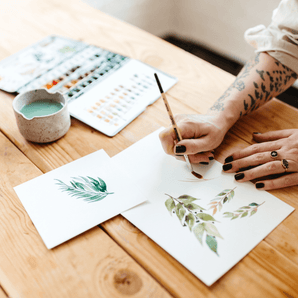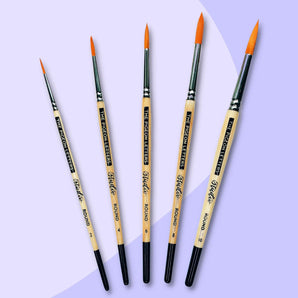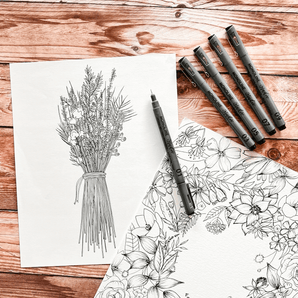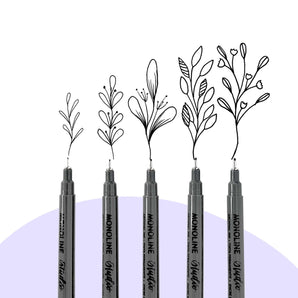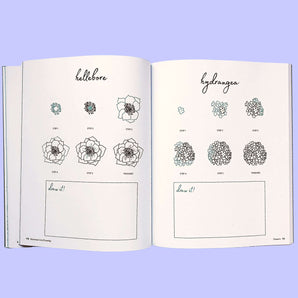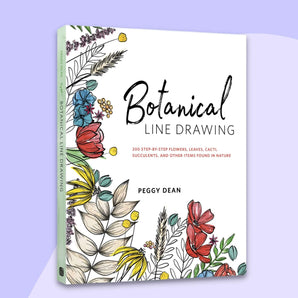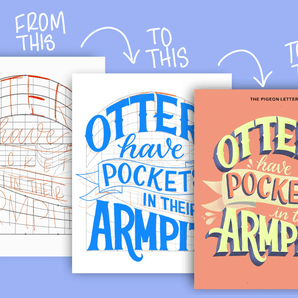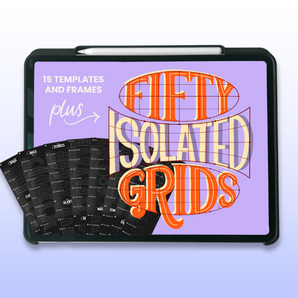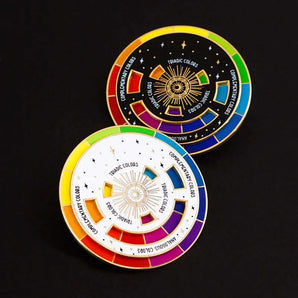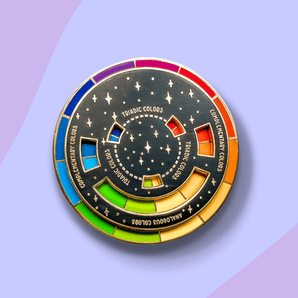I’m thrilled to bring you my step-by-step process when creating loose, elegant leaves. I find that loose watercolor techniques can oftentimes feel intimidating to many and I’m here to tell you that it’s quite the opposite! In fact, this style will most likely come easier to you than any other that you’ve tried.

I’m going to take it a step further by not only showing you the very simple brush strokes needed to achieve this style, but also how to create layers of opacity to really enhance the effect and make your leaves demand the attention they deserve. This is a project that can be created as a standalone piece, added to invitations, table place cards, wedding suites, you name it. They never go out of style.
Supplies Needed
- Two shades of green watercolor – I’ll be using Daniel Smith’s Cascade Green & Perylene Green
- Round brush – I’m using The Pigeon Letters #6
- 140lb/300gsm cold press watercolor paper – I’m using Legion Stonehenge Cold Press 7×10″
- Jar of water
Note: Some links contain affiliate links, meaning I will make a small commission at no extra cost to you.
Step 1: Get to Know Your Brush
To create leaves, you need to know how to take advantage of your round brush. These brushes are created with the ability to execute thin strokes and thick strokes depending on the amount of pressure you apply. When using the tip of your brush with little pressure, your stroke will be thin. When you apply more pressure, the stroke thickens quite a bit. The larger the brush size, the more real estate you’ll cover.
Notice that on my thick stroke, I’ve set the brush down on its side, while the brush itself it upright, perpendicular to the paper.

Pro tip: Legion Stonehenge Cold Press paper is the one of the best for letting your watercolor work exactly how you want it to. The water will “sit” in the textured areas, allowing the pigment to shine boldly in place.
You can combine those two pressures in the same stroke to create a thick stroke that gradually thins out into a point. This is how we’ll form our leaves. Once that feels comfortable, you can start to slightly curve the stroke to make one side of the leaf, then repeat on the other side to make a fuller figured leaf. You can opt to add some interest by leaving a tiny white space in the center to act as the leaf’s vein.

Color: Daniel Smith Green Apatite
Pro tip: While you definitely want a good amount of water on your brush, you don’t want too much. Be sure to lightly drag your brush on the edge of your water jar after dipping to remove excess water.
Step 2: Get to Know Your Paint-to-Water Ratio
Want to take control over the transparency that your paint has on paper? First note that not all pigments are created equally. In the case of transparency, this means that some paints are much more vivid right away when using them, while others take some additional prepping with water. You can find more information on the paint you use by looking at its color info, which includes transparency, lightfastness, staining level, and granulation.
The easiest exercise for any pigment you choose to use is to create some opacity swatches. I usually do this with a few quick strokes, essentially creating blobs of color. But since we’re learning leaf shapes, I thought it’d only make sense to do this exercise while painting leaves! Here’s what you do:
- Fully saturate your brush in water and paint. Do this by rolling the brush on its side while applying pressure. You want to make sure it’s covered throughout, not just on the tip of the brush. When it’s saturated, paint your first leaf.
- Now, dip your brush in the water quickly, drag it lightly against the water jar’s edge to release excess water, and paint another leaf next to the first. Note: Do not gather more paint!
- Repeat step two until the water runs clear on the paper.
It’s as easy as that! Now you know all the various stages of paint-to-water that you have the ability to create!

Colors: Daniel Smith Green Apatite, Cascade Green, and Perylene Green
I encourage you to try this exercise with multiple paint colors to experiment with different hues and values. It will help you determine the colors you want to use for your final piece. After I repeated this a few times, I opted for a deep, cool green palette and went with Cascade Green & Perylene Green.
Step 3: You’re Ready to Start Your Painting
Now we’re going to move in the opposite direction. Rather than start with your brush fully saturated with paint, we’re going to want much more water than paint on our brush because we want to create the first layer of our leaves with a lot of transparency. It’s best to have a scrap piece of paper nearby so you can test your stroke before applying the paint to your piece. I usually grab paint and use my mixing well to water it down before I begin painting.
I’ve opted to use Cascade Green and Perylene Green for my final piece because they both feature a beautiful cool green and will cover a medium to dark color range. I also love the way that Cascade Green will sometimes separate into a gorgeous blue (more on this later).
When you have a good paint-to-water ratio that is nice and light on paper, begin painting your leaves. First use the tip of your brush to paint a thin stem, then move into your dual-pressure stroke to create your leaves. Some of them may come out almost completely clear and that’s okay! We’re building up depth and we need those super light leaves just as much as we’ll need the dark ones. When you’ve completed your first layer of leaves, LET IT DRY COMPLETELY. This part is very important. If you don’t let it dry, the new leaf layers will bleed into the old ones, defeating the purpose of this pretty painting!

Color: Daniel Smith Cascade Green
Pro tip: I find that painting leaves by pulling the brush away from me gives me a better flow in my strokes and also gives me more control when making the tips of my leaves have a nice thin point. That said, I’m painting upside-down! This painting will actually show my leaves cascading down onto the page, rather than upward. You can create your leaves in any direction that you’d like, of course.
Step 4: Add the Second Layer of Leaves
Once the first layer has completely dried, add the second layer of leaves just as you did the first round. Get creative with placement. This project is meant to feature overlapping leaves because it shows depth. This layer should have a medium paint-to-water ratio. It shouldn’t be packed with paint, but it should have more than the first round. Just as the first layer, let this layer completely dry before moving on. 
Color: Daniel Smith Cascade Green
While this layer is drying, I wanted to show you the gorgeous granulation in the Cascade Green color. Notice the separation of green and blue here. This is one color! It’s so beautiful watching it create its own magic to accompany your painting.

Color: Daniel Smith Cascade Green
Step 5: Add Your Final Layer
Now it’s time to add your final layer. This is when I’m switching paint colors and grabbing some Perylene Green. I’m going to be using this with its full pigment on display, as it will be used to paint my most eye-catching leaves. You can opt to use the same color you’ve been using and just add more pigment to your brush this round. It will create the same effect.

Colors: Daniel Smith Cascade Green & Perylene Green

That’s it! You can add as many layers as desired, but keep in mind that sometimes the key is knowing when to stop. When in doubt, take a minute to walk away and then return with fresh eyes.
You might surprise yourself!





